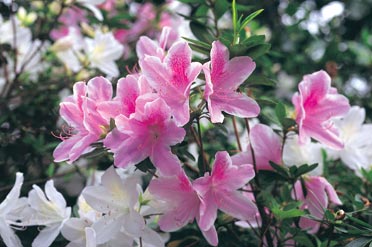Alabama Gardener

Old habits die hard, and so do the sometimes mistaken beliefs that support them. For example, there’s the tradition of waiting until the last frost has passed to start a garden. Yes, it’s wise to delay planting warm-natured tomatoes and marigolds until winter is on the wane, but what about lettuce, potatoes, nasturtiums, and other plants that crave cool conditions? If you plant a small spring garden now, you’ll be enjoying garden-fresh veggies and pretty flowers by the time you set peppers in the ground. Begin with peas and potatoes, which produce best when the soil is cool, and then start making small sowings of fast-growing lettuce, radishes, carrots, and perhaps a few baby beets. In north Alabama, be ready to cover your young ‘uns with old blankets through late freezes, or you can use cardboard boxes held in place with bricks. During sunny spells, keep a hose or watering can handy, because salad crops grow best when the soil is kept constantly moist.Indoors, start seeds of tomatoes, peppers and eggplant, as well as any unusual annual flowers you want to grow. If you would rather work with store-bought seedlings, get them early and transplant them to larger containers so they don’t become badly rootbound. Set them out in the sun on mild days, but bring them indoors when temperatures drop below 50 degrees. Put some time into soil preparation before setting out flowers. Long-lived perennials always show their appreciation for rich, fertile soil, and this is especially true of reblooming daylilies, which are now available in yellow, red and soft apricot. To get them to bloom again and again all summer, dig a generous helping of organic matter into the bed, and then supplement these riches with infusions of fertilizer between each flush of blooms.There is great news for gardeners who love roses, but don’t love their need for constant spraying. The “Knock Out” varieties, which come in two shades of pink, have been thriving in unsprayed test gardens throughout the South for a couple of years. In addition to showing great resistance to rose blackspot, the “Knock Outs” are less attractive to Japanese beetles than other roses. Another new plant to look for in nurseries is “Endless Summer” French hydrangea, which was named the “Best New Plant Introduction” by Southern nurserymen in 2003. “Endless Summer” blooms on both old and new wood, whereas other French hydrangeas bloom only from buds produced the previous summer.Clean out old containers so they will be ready to fill with pretty flowers, which often look best when they are combined into container bouquets. The recipe for success is simple. Start with an upright plant such as salvia or mealycup sage, then add something with dark burgundy or light gray foliage (coleus, Persian shield, helichrysum or dusty miller), and finish off with cascading “Wave” petunias or ornamental sweetpotato vine. In between the time when forsythias and dogwoods bloom, apply a weed preventer to areas of your lawn that have been plagued by crabgrass or other weeds. In north Alabama, feed fescue lawns one last time. In other parts of the state, rake thatch from Bermuda and zoysia lawns, but wait until they begin to show signs of greening up to start feeding them.Give strawberries a deep drench with a water-soluble fertilizer, and continue setting out new blueberries, blackberries, raspberries and figs. Finish fruit tree pruning, and don’t forget to brighten your kitchen table with bouquets of blossom-bearing branches. Mobile native Barbara Pleasant’s newest book, The Southern Garden Advisor, is now available at bookstores. Learn more about Barbara and her work at her website, barbarapleasant.com.
